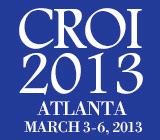 Recent dire estimates about the percentage of people with HIV who make it through a series of engagements with the health care system—from linkage into care, to retention in care, to taking antiretrovirals, to achieving an undetectable viral load—may not be as great as previously suspected, the National AIDS Treatment Advocacy Project reports. Previous research on this “treatment cascade” phenomenon, in which a progressively smaller percentage of the total number of people diagnosed with HIV make it through each subsequent step on their way to viral suppression, has worked under the assumption that each step is dependent on that previous.
Recent dire estimates about the percentage of people with HIV who make it through a series of engagements with the health care system—from linkage into care, to retention in care, to taking antiretrovirals, to achieving an undetectable viral load—may not be as great as previously suspected, the National AIDS Treatment Advocacy Project reports. Previous research on this “treatment cascade” phenomenon, in which a progressively smaller percentage of the total number of people diagnosed with HIV make it through each subsequent step on their way to viral suppression, has worked under the assumption that each step is dependent on that previous.
However, researchers at the Kaiser Permanente health care system, which operates in eight states and Washington, DC, analyzed the institution’s vast HIV population and ran an analysis comparing the success of each step when measured independently from the other and compared it with the traditional measurement of dependent relationships between the steps. They found that is was possible for a significant proportion of the total number of people with an HIV diagnosis to achieve an undetectable viral load without making it through all the previous steps in the cascade as they are currently defined. The researchers presented their findings at the 20th Conference on Retroviruses and Opportunistic Infections (CROI) in Atlanta.
The Kaiser researchers identified all of those receiving care in its system who were HIV positive, at least 13 years old and who had at least eight months of membership with Kaiser in 2010. The study included 16,817 people, 87 percent of whom were male and 61 percent of whom were between 35 and 54 years old. The researchers studied the success of the group to make it through the four steps of the treatment cascade: linkage, retention, treatment and viral suppression.
Measured dependently on the previous steps in the cascade, 66.2 percent of the total filled an ARV prescription, while the independent figure was 83.1 percent. As for those who reached a viral load below 200 in 2010, 66.2 percent did so, measured dependently, compared with 80.4 percent who did so independently.
These findings were limited by the fact that the analysis was conducted under the assumption that everyone has equal access to health care. However, with the rollout of the Affordable Care Act in 2014, such equal access may come closer to a reality for much of the country, particularly in those states that agree to the Medicaid expansion.
To read the NATAP report, click here.
To read the conference poster, click here.
Advertisement
Advertisement
Advertisement






Comments
Comments